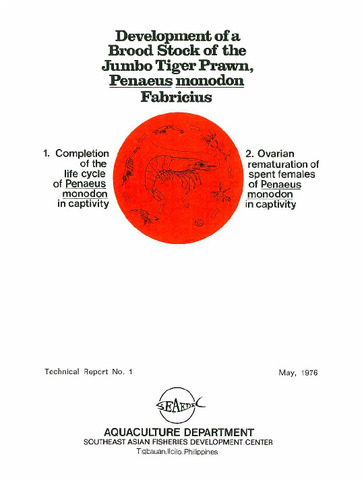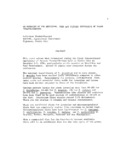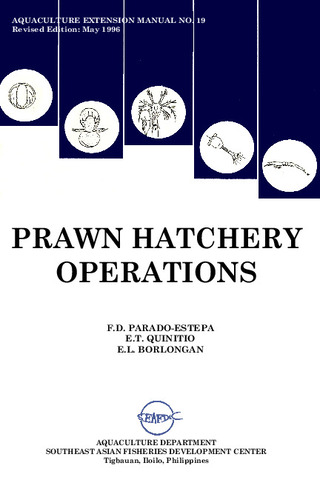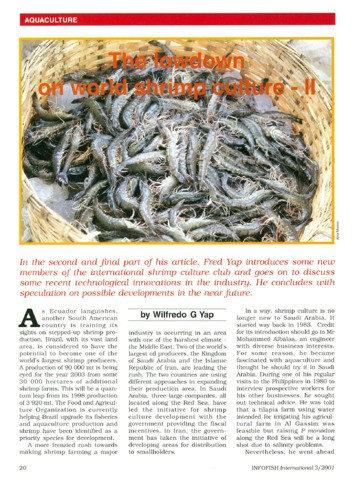Development of a brood stock of the jumbo tiger prawn, Penaeus monodon Fabricius
Share
abstrak
The full-scale cultivation of sugpo, P. monodon Fabricius, could only be realized if there is an assurance of continuous supply of fry. Obviously, a steady supply will depend largely on the availability of spawners. In December 1975, roughly after 2 1/2 years of intensive study, for the first time in the world, SEAFDEC Aquaculture Department has succeeded in inducing P. monodon to mature and produce normally the first generation of postlarval fry, thereby successfully effecting the completion of P. monodon's life cycle while in captivity. Another significant study the Department has initially carried out which could help augment and stabilize the supply of spawners and eventually stimulate the establishment of more prawn hatcheries and the development of ponds for prawn culture as a major export-oriented, dollar-earning industry, is the possible development of ovarian rematuration of spent spawners.
Suggested Citation
Santiago, A. C., Rodriguez, L., Mateo, R., & Obregon, R. (1976). Development of a brood stock of the jumbo tiger prawn, Penaeus monodon Fabricius. (Technical Report No. 1). Tigbauan, Iloilo, Philippines: Aquaculture Department, Southeast Asian Fisheries Development Center.
Taxonomic term
Koleksi
Related items
Showing items related by title, author, creator and subject.
-
An overview of the nutrition, feed and feeding techniques of prawn penaeid/shrimps
Piedad-Pascual, Felicitas (Philippine Council for Aquatic and Marine Research and Development, 1989)This paper echoes what transpired during the first International Conference of Penaeid Prawns/Shrimps held in Iloilo City in December 4-7, 1984, particularly on the Nutrition nd Feed Development. Around 25 papers were ... -
Prawn hatchery operations
Parado-Estepa, Fe D.; Quinitio, Emilia T.; Borlongan, Emeterio L. (Aquaculture Department, Southeast Asian Fisheries Development Center, 1996-05)The manual, an updated version of the 1984 SEAFDEC/AQD manual, presents the underlying principles and step-by-step instructions of prawn larval and post-larval rearing. The techniques described are not only applicable to ... -
The lowdown on world shrimp culture - II
Yap, Wilfredo G. (INFOFISH, 2001)This paper introduces some new members of the international shrimp culture club and goes on to discuss some recent technological innovations in the industry, particularly the polyculture of tilapia (mainly Oreochromis ...






